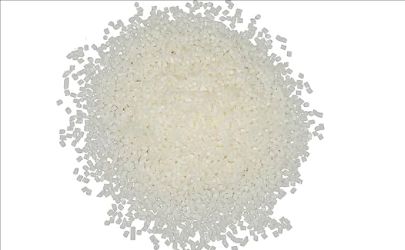The Future of Eco-Friendly Plastics: What’s Driving PHB Adoption in the APAC Region

“The Asia-Pacific market for Polyhydroxybutyrate (PHB) is experiencing notable growth driven by heightened environmental awareness and strict regulations that promote the use of biodegradable plastics. PHB, a sustainable and compostable polymer, is increasingly recognized as a viable alternative to traditional plastics, especially in sectors like packaging, agriculture, and medical applications. Leading countries such as China, Japan, and South Korea are at the forefront of this transition toward bioplastics, bolstered by government initiatives and a growing consumer preference for eco-friendly products.
Despite its promising potential, the PHB market faces challenges, including high production costs and limited capacity for large-scale manufacturing. Nevertheless, advancements in microbial fermentation technology and strategies aimed at cost reduction are improving PHB’s market feasibility and attracting investments from major industry players. Ongoing research and development, alongside collaborations between bioplastic producers and end users, are likely to propel market growth. As businesses place greater emphasis on circular economy practices and sustainability commitments, the demand for PHB is expected to rise in the APAC region. Innovation in production methods and achieving economies of scale will be essential to ensure PHB competes effectively with conventional plastics. "
The Asia-Pacific market for Polyhydroxybutyrate (PHB) market was valued at USD 36.6 Million in 2024 and is projected to reach USD 150 Million by 2032, with a compound annual growth rate (CAGR) of 17.6% from 2025 to 2032.
Additionally, rapid industrialization and urbanization are increasing the demand for sustainable materials across multiple sectors. The region is supported by a strong presence of key manufacturers who are investing in research and development to improve the efficiency and cost-effectiveness of PHB production.
Growing consumer awareness about eco-friendly products and an increasing preference for bioplastics in food packaging are further accelerating market growth. The availability of abundant raw materials, along with favorable government incentives for bio-based industries, positions the Asia Pacific region as a significant hub for PHB production. As a result, the region is expected to continue its dominant growth trajectory in the coming years.
Strict regulations on single-use plastics and incentives for biodegradable alternatives in countries like China, India, and Japan are driving PHB adoption.
Many governments in the Asia Pacific region are implementing strict regulations to reduce plastic pollution and promote biodegradable alternatives. Countries such as China, India, and Japan have introduced bans or restrictions on single-use plastics, prompting industries to seek sustainable substitutes like PHB (polyhydroxybutyrate). Furthermore, financial incentives, tax benefits, and subsidies for bio-based industries are encouraging innovation and investment in PHB production. These regulatory efforts not only create a favorable business environment for PHB manufacturers but also ensure long-term market sustainability.
The need for PHB-based packaging and materials is being driven by consumers' growing preference for eco-friendly and sustainable products.
Consumers in the Asia Pacific region are becoming more aware of the environmental damage caused by traditional plastics. As concerns about plastic waste accumulating in landfills and oceans grow, there is a noticeable shift towards eco-friendly alternatives. The demand for biodegradable plastics, such as PHB, is increasing as both companies and consumers prioritize sustainability. Additionally, large corporations and fast-moving consumer goods (FMCG) brands are incorporating PHB-based packaging to fulfill their corporate social responsibility (CSR) commitments, which is further driving market expansion.
Expanding industries, particularly in packaging, agriculture, and medical sectors, are increasing the need for sustainable bioplastics.
The Asia Pacific region is witnessing significant industrial growth, especially in sectors such as packaging, agriculture, and healthcare. Urbanization is driving an increased consumption of packaged goods, which in turn boosts the demand for sustainable packaging solutions. In agriculture, PHB-based biodegradable films and coatings are becoming popular as environmentally friendly alternatives to conventional plastics. Similarly, in the healthcare sector, PHB is being adopted for medical applications like sutures and implants, thanks to its biocompatibility.
Leading bioplastics companies are investing in research, development, and production facilities in the region, improving cost efficiency and scalability.
The Asia Pacific region hosts several key players in the bioplastics industry, significantly contributing to the large-scale production of PHB (polyhyroxybutyrate). Companies in this sector are making substantial investments in research and development to enhance the efficiency of PHB production, making it more cost-effective and widely accessible. This robust industrial foundation fosters continuous innovation, enabling PHB manufacturers to scale their operations in response to rising demand. Additionally, collaborations among governments, research institutions, and private enterprises are accelerating technological advancements in PHB production.
The easy access to renewable feedstocks, such as sugarcane and corn starch, supports large-scale PHB production.
The region has an abundant supply of renewable feedstocks, such as sugarcane, cassava, and corn starch, which are essential for producing PHB (polyhydroxybutyrate). Countries like Thailand, India, and Indonesia have significant agricultural outputs, making it easier and more cost-effective to source raw materials for bioplastic manufacturing. This availability reduces dependence on fossil fuels and aligns with global sustainability trends, further promoting the growth of the PHB market in the Asia Pacific region.
Competitive Landscape
Some of the major companies operating within the Polyhydroxybutyrate(PHB) market are: Kaneka, Biomer, Newlight, TianAn Biologic Materials Co., Ltd. and others.